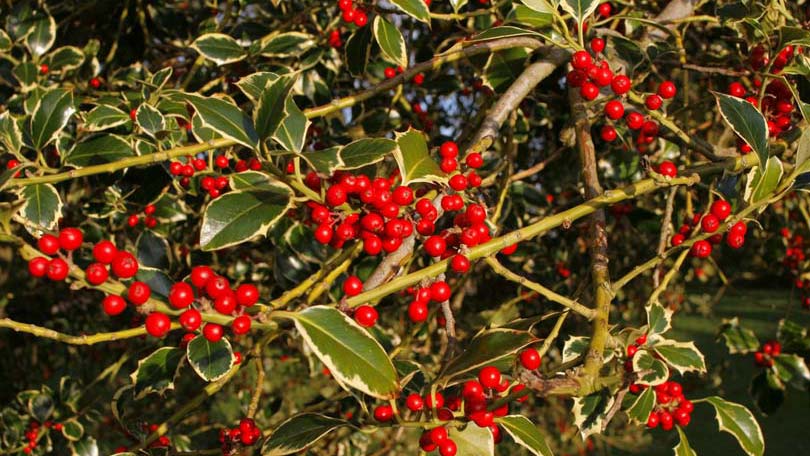
We all know that holly is used for Christmas decorating. But what else? Most people seem to think they know what it is, but can’t identify it past being a holiday decoration. Holly does have other uses besides being a festive symbol. Here are some little known facts about Holly.
While we are most familiar with the holly leaves used in Christmas decorating, there are over 400 kinds of holly. Holly plants range from dwarf bushes to hedges to tall trees. They are a versatile plant and can be found in almost every region of the word. The only exceptions are Australia and Antarctica, where the extreme growing conditions are too much for the plant.
Landscape Uses
Depending on your needs determines what type of holly you should plant. Do you need privacy? Then a hedge of holly bushes would keep people from looking in and provide you with a scenic screen. When trimmed in the winter, holly branches will grow back leafy and full, creating a great natural barrier to noise and onlookers.
If you need shade, an English holly tree will be an excellent choice. Make sure you have lots of room, however, as holly trees can grow very large. Some species can grow between sixty and seventy feet tall, and have a branch span of that wide too. They have an extensive root system, so be cautious where you plant it that it will not harm pipes or underground lines.
Living in the north during a long winter can be dreary. A shot of color in the form of an evergreen holly may be just what your back yard needs. Several types of holly are deciduous and will not shed their foliage in the winter months. The leaf colors range from dark green to light green to variegated versions. If you have male and female plants, your holly bushes will produce bright red berries.
The holly in the form we associate with Christmas is usually American Holly and English Holly. They have the dark green foliage with pointed edges. They have bright red berries stand out in vivid contrast to the foliage, making for a beautiful natural display.
Features
The most popular holly leaves are shown with small spikes or thorns at the ends of the leaves. The thorns are actually helpful in some ways. Songbirds hide beneath the branches for protection. The thorns keep larger birds of prey and other predators at bay.
To get berries on the bushes, a male and female plant must be within thirty to forty feet of each other. The male will pollinate the branches of the female and red berries will grow each year. If there are not both sexes of plants, the plants will still grow, but without the berries. Be very careful when planting if you do want berries. They are highly toxic to humans. If you have children around, the berries could make them sick with diarrhea and vomiting. Keep them away from the play areas or simply do not plant both sexes until the children are older.
Special Care
Prune holly bushes in the fall or winter. The branches need to be trimmed in order to foster new growth for the following spring. Old growth cut back will also allow for more and thicker foliage the following year. You can also determine the shape of your bush if you desire by pruning the leaves and branches in the fall or spring.
A holly bush needs a lot of sunlight to grow. It can be planted in the direct, full sunlight and thrive. It will only tolerate partial shade before it will start to fade. They grow best in acidic soils within a landscape or on their own as a hedge or a bush. The soil should drain well and not get soggy.
In Decorations
The holly branches are cut from bushes or stems and used in garlands, centerpieces and wreaths. The foliage will last after being cut for several weeks before it loses its color and dries up. In live floral arrangements, holly will live for several weeks if watered and placed in sunlight. Use holly berries for decorating with care, as the berries can fall off and stain the carpeting. Also, children may be tempted to snack.
As a Food Source
The berries produced by the shrubs are much needed during the winter months for our feathered friends. Songbirds and even wild turkeys will eat the holly berries if there are no other food sources nearby. The bright red color will stand out against the snow, attracting many bird species. Other fruit eating animals may also visit, like raccoons, opossum, or mice.
The leaves are eaten by all herbivore animals, especially during the winter. The holly plants are a diet staple for wildlife in some areas of the world. The thorns on the leaves will not harm their mouths during chewing.

